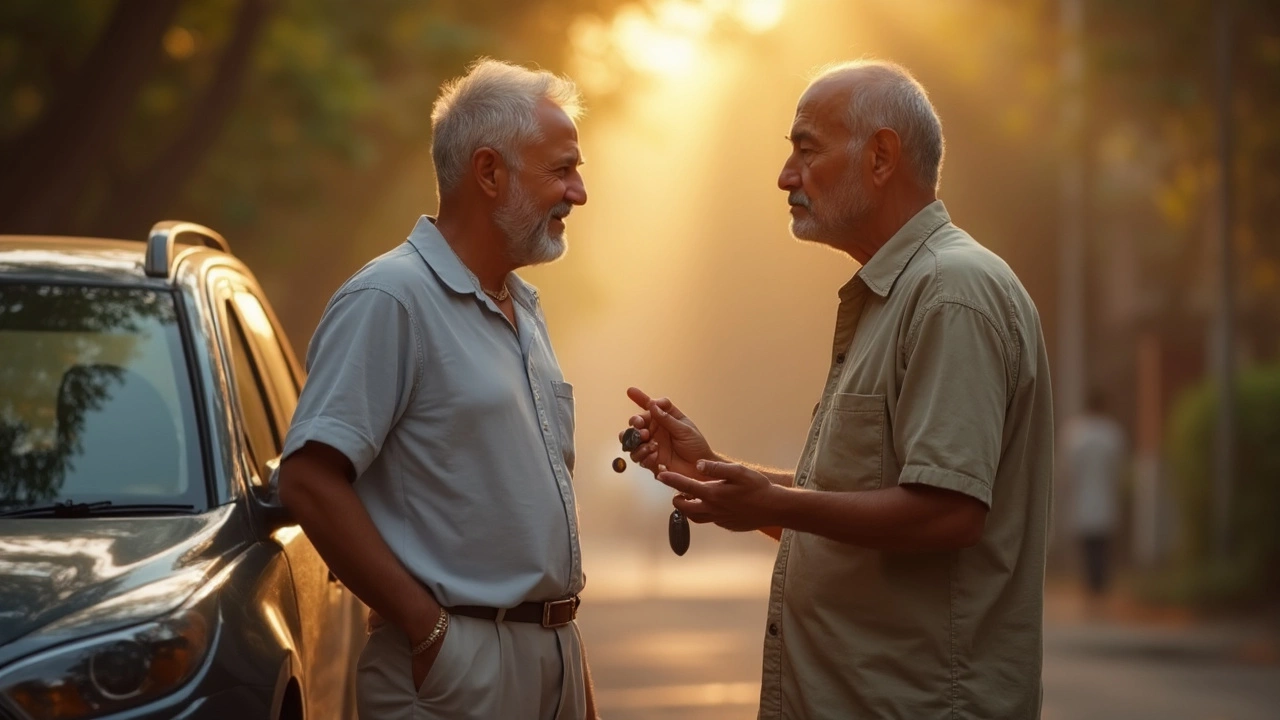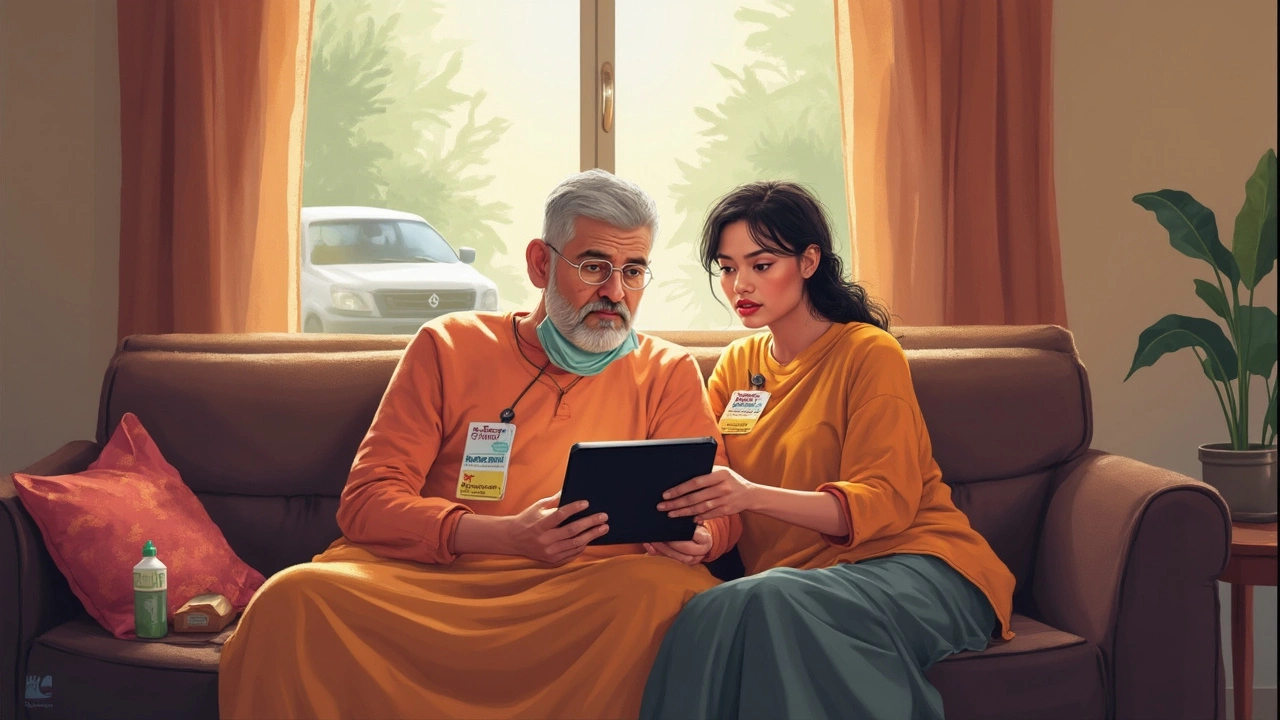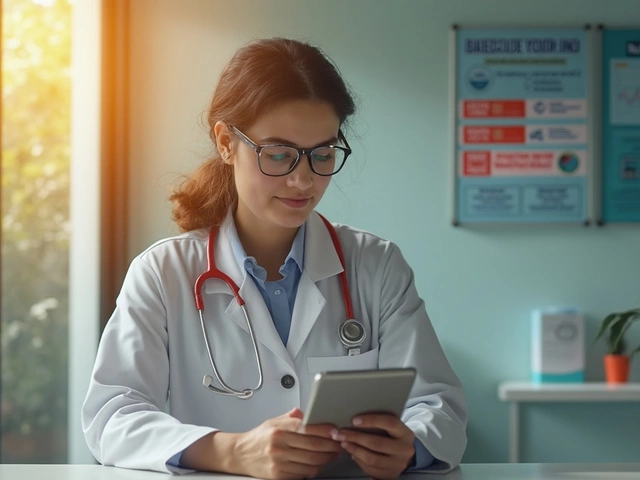
You just got through open-heart surgery, and suddenly everyone’s talking about when it’s safe for you to cruise in a car again. It’s not just about hopping in the passenger seat and going. Your body’s been through a lot, and those first few weeks matter big time for your recovery.
The truth is, the exact timing depends on a bunch of things: the type of surgery you had, how well you’re healing, and your doctor’s advice. Some folks might be good to ride after two weeks, others might need four or more. Driving is a whole different story—don’t even think about it until your doctor gives a thumbs up, since strong pain meds and sudden movements can mess with you way more than you’d expect.
No one likes surprises, especially when it comes to their heart. So let’s sort through what really affects safe car travel after surgery, how to spot problems before they get serious, and simple tricks that help your first ride go smoother.
- Why Timing Matters After Open-Heart Surgery
- What Doctors Say About Car Travel
- Real-World Tips for a Comfortable Journey
- Warning Signs and When to Wait
Why Timing Matters After Open-Heart Surgery
Thinking about riding in a car soon after open-heart surgery? Hold up—timing isn’t just a suggestion. It’s a safety issue. Your body just went through a pretty huge procedure. It needs time to start healing, and jumping the gun can cause all sorts of trouble.
Your chest might still be tender from where they opened your breastbone (that’s the “sternotomy” most people get). Those bones take weeks to knit back together. Any sudden jerk, a quick stop, or even reaching for your seatbelt can pull at the wound or mess with your stitches. That’s not something you want to risk.
"After open-heart surgery, most patients should wait at least 2–4 weeks before traveling by car as a passenger, and longer before driving, to avoid stress to the chest and complications from medications," — American Heart Association guidelines, 2023.
Most folks aren’t aware that the first six weeks are when the breastbone is most fragile. Your immune system is also busy fending off infection. If you push yourself too hard or travel too soon, you might notice more swelling, pain, or even swelling in your legs. Blood clots (especially in the deep veins of your legs) are a real risk from sitting for long car rides right after surgery.
Here’s some straight talk with numbers—real data from post-op recovery:
| Recovery Milestone | Usually Achieved (weeks after surgery) |
|---|---|
| Walking independently | 1–2 |
| Sitting in a car as a passenger (short trips) | 2–4 |
| Longer car journeys (over 1 hour) | 4–6 |
| Driving yourself | 6–8+ |
If you ever feel weird chest pain, have a fever, or feel super wiped out, waiting before travel is smart. Everyone’s different, so your doctor is always the final say.
What Doctors Say About Car Travel
If you ask most heart surgeons, they’ll tell you not to rush back into the car after open-heart surgery. The main reason? Your breastbone needs time to heal. Most doctors recommend you wait at least open-heart surgery patients hold off car travel for about 2 to 4 weeks before riding as a passenger. This window gives your chest enough time to start mending and lowers the risk of complications if you get jostled around.
Car travel might sound pretty harmless, but it’s not just sitting still. Braking, sudden turns, and even small bumps can put pressure on your chest. Plus, getting in and out of a car requires twisting — not great for a fresh surgical wound. Doctors also factor in how much pain you’re in, if you’re still on prescription pain meds, and whether you have drains or stitches that need extra care.
Now, if you’re thinking about driving, doctors have an even clearer stance: no driving at all until you’re off heavy painkillers, you feel mentally sharp, and you have full range of motion in your arms and upper body. For lots of people, this means waiting 4 to 6 weeks post-op. Your reaction times won’t be normal while you heal, and the risk of getting hurt in a sudden stop is way higher.
Here’s a quick comparison of different recommendations based on recent hospital guidelines:
| Action | Recommended Wait Time | Notes |
|---|---|---|
| Riding as Passenger | 2–4 weeks | No lifting, minimize twisting |
| Short Car Trips | 2 weeks (min) | Limit to local rides at first |
| Driving Yourself | 4–6 weeks | Must be off narcotics and have surgeon approval |
Every case is different, so your doctor’s advice comes first. If you had complications, a second surgery, or other health problems like diabetes, you might need even more time. Always double-check what your medical team says — they’re not just being cautious, they’re looking out for your long-term safety.

Real-World Tips for a Comfortable Journey
If you’ve been cleared to travel after open-heart surgery, you still need to play it smart. Even as a passenger, your body is going to notice bumps, sudden stops, and hours stuck in one position. The right prep can mean the difference between a smooth trip and a miserable one.
Seatbelts are a must for safety, but they can dig right into your chest after surgery. Try using a small pillow, cushion, or even a folded towel between your chest and the seatbelt for padding. This takes the pressure off your incision and cuts down the chance of pain or irritation. Some people call this the "heart hugger" trick.
Long rides can lead to stiffness, swelling, or even dangerous blood clots. The American Heart Association recommends stopping every 1-2 hours to stretch your legs, walk around, and shift your body. Not going far? Even when you’re just heading across town, try moving your feet and ankles to keep your blood flowing.
- Bring all your medications, plus extra, just in case.
- Wear loose, comfy clothes that don't press on your chest or belly.
- Start with short trips before trying longer rides.
- Avoid heavy meals right before heading out, since a full stomach can make you feel more tired or queasy.
Temperature matters, too. Cars can get hot quickly, and some heart patients are extra sensitive to heat or cold. Adjust the AC, keep a water bottle close, and crack a window if you need more air.
Here’s a quick look at what to keep in mind for a comfortable and safe car journey:
| Tip | Why It Matters |
|---|---|
| Stop every 1-2 hours | Prevents stiffness and lowers blood clot risk |
| Cushion for seatbelt | Protects incision, reduces pain |
| Wear loose clothes | Makes breathing easier, less pressure on chest |
| Bring your meds | Ensures you don’t miss a dose if delayed |
| Stay hydrated | Reduces risk of dizziness and clots |
One last tip most people forget: carry your hospital discharge summary and doctor’s contact info, just in case you need emergency help or get stopped at a roadside check. That little bit of extra prep can make your journey way less stressful and a lot safer.
Warning Signs and When to Wait
Just because you think you’re ready to ride doesn’t mean your body agrees. After open-heart surgery, ignoring warning signals is simply not worth the risk. The first few weeks are high-stakes: your body’s healing, there’s a real chance of hidden complications, and the last thing you want is an emergency on the road.
So, what should set off your alarm bells? Here are some red flags you can’t ignore before you even think about getting in a car:
- You feel short of breath, even when you’re not moving around much
- Chest pain or a weird tightness that wasn’t there last week
- Your incision looks red, swollen, or is leaking fluid
- Fever (anything over 100.4°F/38°C)
- Dizzy spells or feeling faint, especially when standing up
- New swelling in your legs or feet
- Random confusion, brain fog, or trouble focusing
Doctors actually track these issues for a reason. According to the Society of Thoracic Surgeons, about 3–5% of patients get a wound infection, and arrhythmias (irregular heartbeat) can pop up in almost 30% of people after surgery. These numbers aren’t here to freak you out—they’re a heads up, so you know what to watch.
| Complication | Chance (%) | Should You Wait to Travel? |
|---|---|---|
| Wound Infection | 3–5 | Yes |
| Arrhythmia | 20–30 | Yes, if new or worsening |
| Pulmonary Issues | 2–5 | Yes, if ongoing |
| Trouble Healing | Up to 10 | Yes |
If any of these things are happening, don’t shrug them off. Stay home and call your doctor. Catching these problems early usually means a quicker fix, less chance of messing up your recovery, and a better ride once you’re in the clear.
Some smart tips? Always get a thumbs-up from your surgeon before traveling. Pack any meds you need and know the nearest hospital along your route. Even stuff like keeping a charged phone and an emergency contact saved on speed dial makes a difference.





Rohan Talvani
I am a manufacturing expert with over 15 years of experience in streamlining production processes and enhancing operational efficiency. My work often takes me into the technical nitty-gritty of production, but I have a keen interest in writing about medicine in India—an intersection of tradition and modern practices that captivates me. I strive to incorporate innovative approaches in everything I do, whether in my professional role or as an author. My passion for writing about health topics stems from a strong belief in knowledge sharing and its potential to bring about positive changes.
view all postsWrite a comment